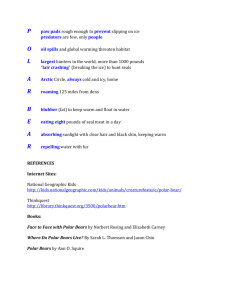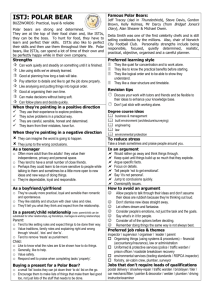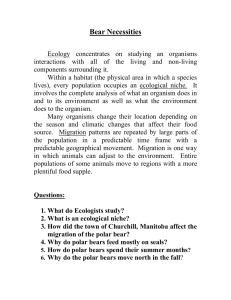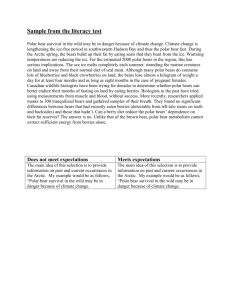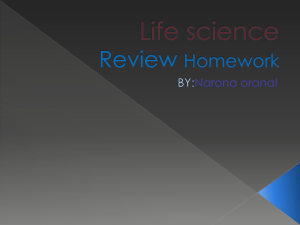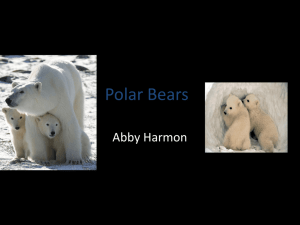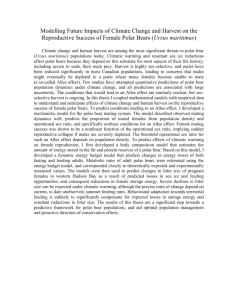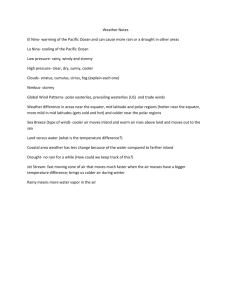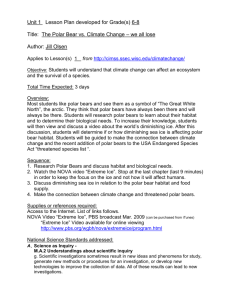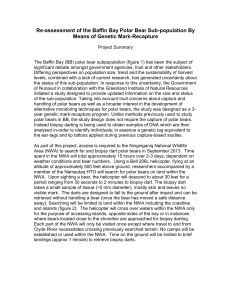File
advertisement
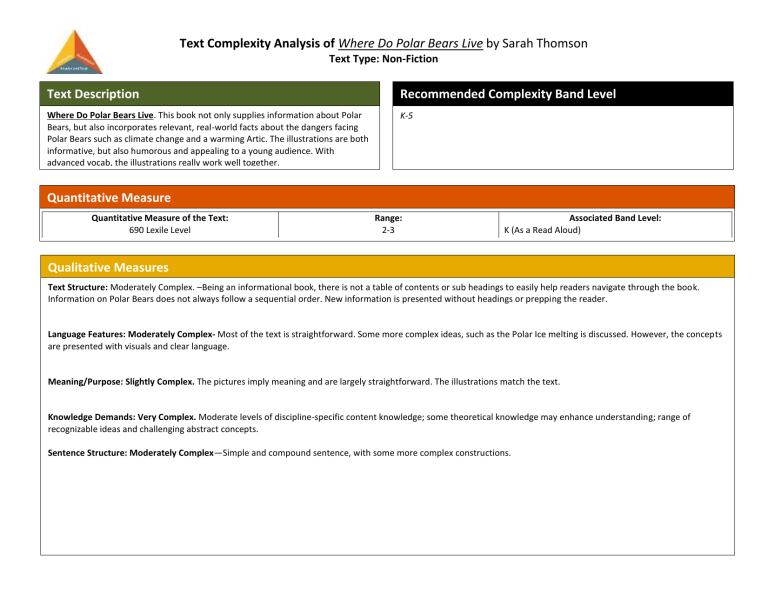
Text Complexity Analysis of Where Do Polar Bears Live by Sarah Thomson Text Type: Non-Fiction Text Description Recommended Complexity Band Level Where Do Polar Bears Live. This book not only supplies information about Polar Bears, but also incorporates relevant, real-world facts about the dangers facing Polar Bears such as climate change and a warming Artic. The illustrations are both informative, but also humorous and appealing to a young audience. With advanced vocab, the illustrations really work well together. K-5 Quantitative Measure Quantitative Measure of the Text: 690 Lexile Level Range: 2-3 Associated Band Level: K (As a Read Aloud) Qualitative Measures Text Structure: Moderately Complex. –Being an informational book, there is not a table of contents or sub headings to easily help readers navigate through the book. Information on Polar Bears does not always follow a sequential order. New information is presented without headings or prepping the reader. Language Features: Moderately Complex- Most of the text is straightforward. Some more complex ideas, such as the Polar Ice melting is discussed. However, the concepts are presented with visuals and clear language. Meaning/Purpose: Slightly Complex. The pictures imply meaning and are largely straightforward. The illustrations match the text. Knowledge Demands: Very Complex. Moderate levels of discipline-specific content knowledge; some theoretical knowledge may enhance understanding; range of recognizable ideas and challenging abstract concepts. Sentence Structure: Moderately Complex—Simple and compound sentence, with some more complex constructions. Text Complexity Analysis of Where Do Polar Bears Live by Sarah Thomson Text Type: Non-Fiction Considerations for Reader and Task Possible Major Instructional Areas of Focus (include 3-4 CCS Standards) for this Text: RI.K.1---With prompting and support, ask and answer questions about key details in a text. Below are factors to consider with respect to the reader and task: Potential Challenges this Text Poses: Vocabulary—“scrambles,” “snuggled,” “ruffle,” “tumbles,” “tundra” The sentence structure is not as direct. Background Information-Artic Circle and Warming Temperatures globally. RI.K.2---With prompting and support, identify the main topic and retell key details of a text. RI.K.8---With prompting and support, identify the reasons an author gives to support points in a text. Differentiation/Supports for Students: Audio/video book reading. SL.K.5—Add drawings or other visual displays to descriptions as desired to provide extra detail. L.K.6—Use words and phrases acquired through conversations, reading and being read to, and responding to texts. Puppet characters that are introduced as the story moves along. Labels to help the students match with pictures. Vocabulary list for each chapter. Pre-teach some vocabulary words before each chapter and have students come up with definitions, as well as look them up. Interactive Response Journal to record thoughts and questions during reading. Graphic Organizers to help summarize the findings. Polar habitat sketches for pre and post observations and to help students see the habitat. Created by Shane Miller- Frostburg University____________________________________________ mail, date) Reviewed by ____________________________________________(name, state, e-
